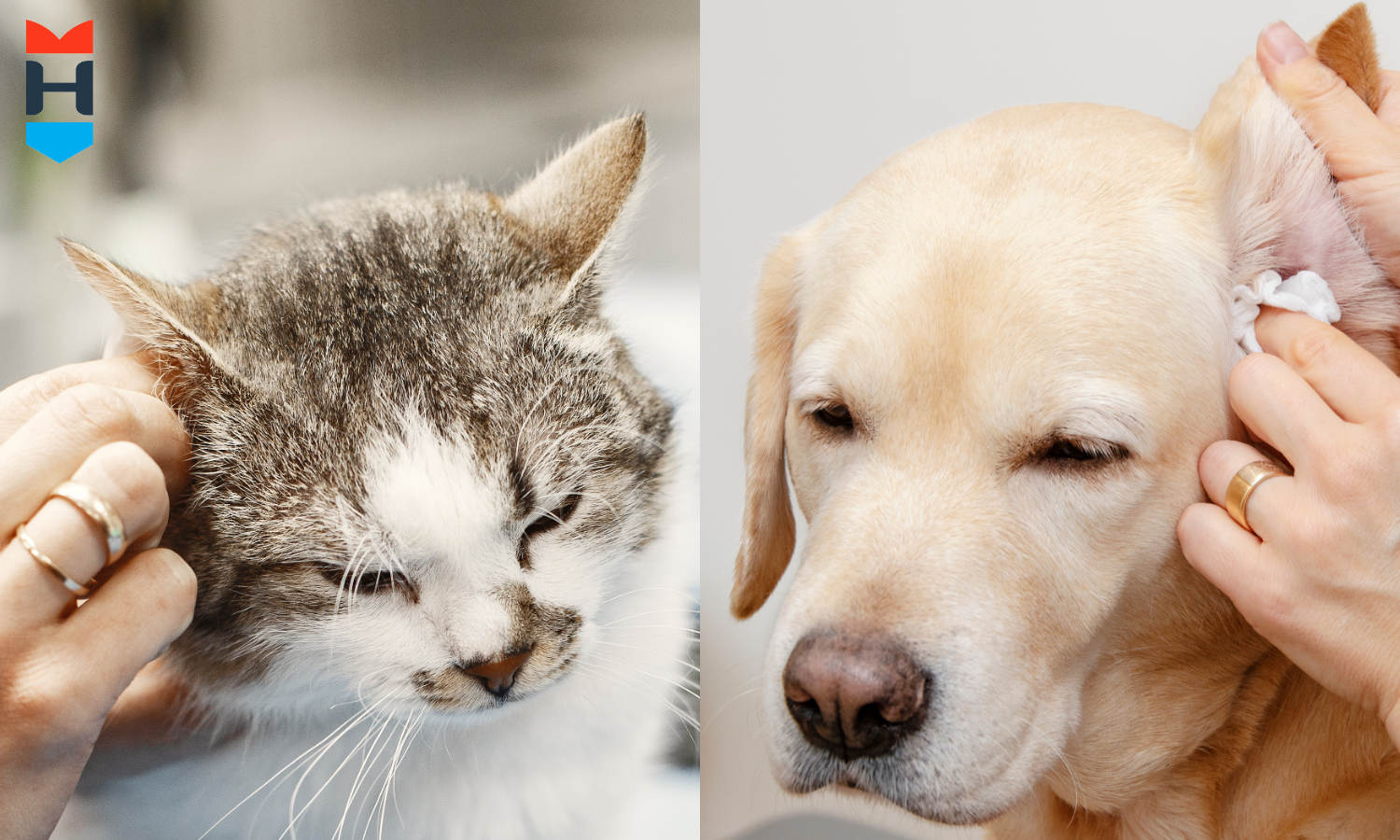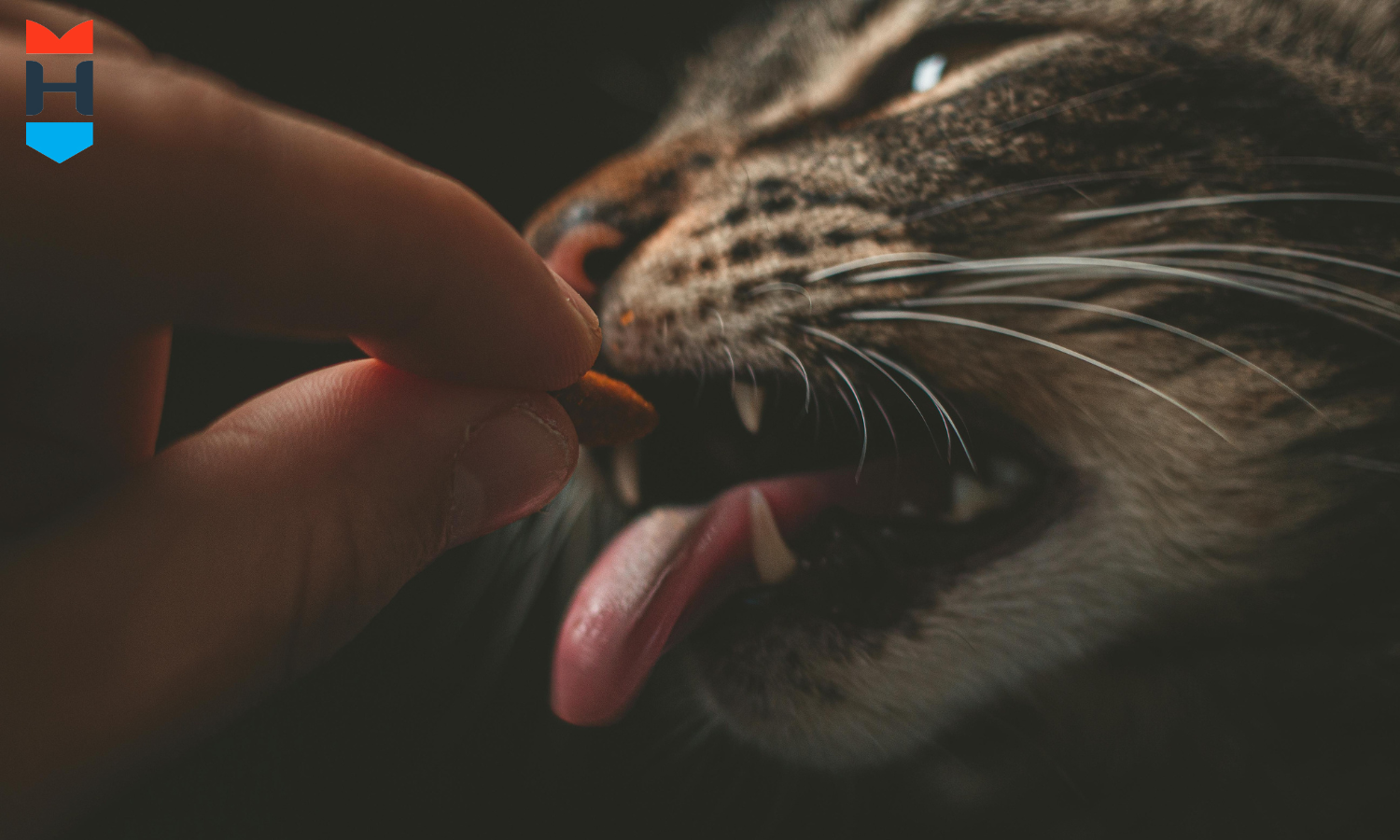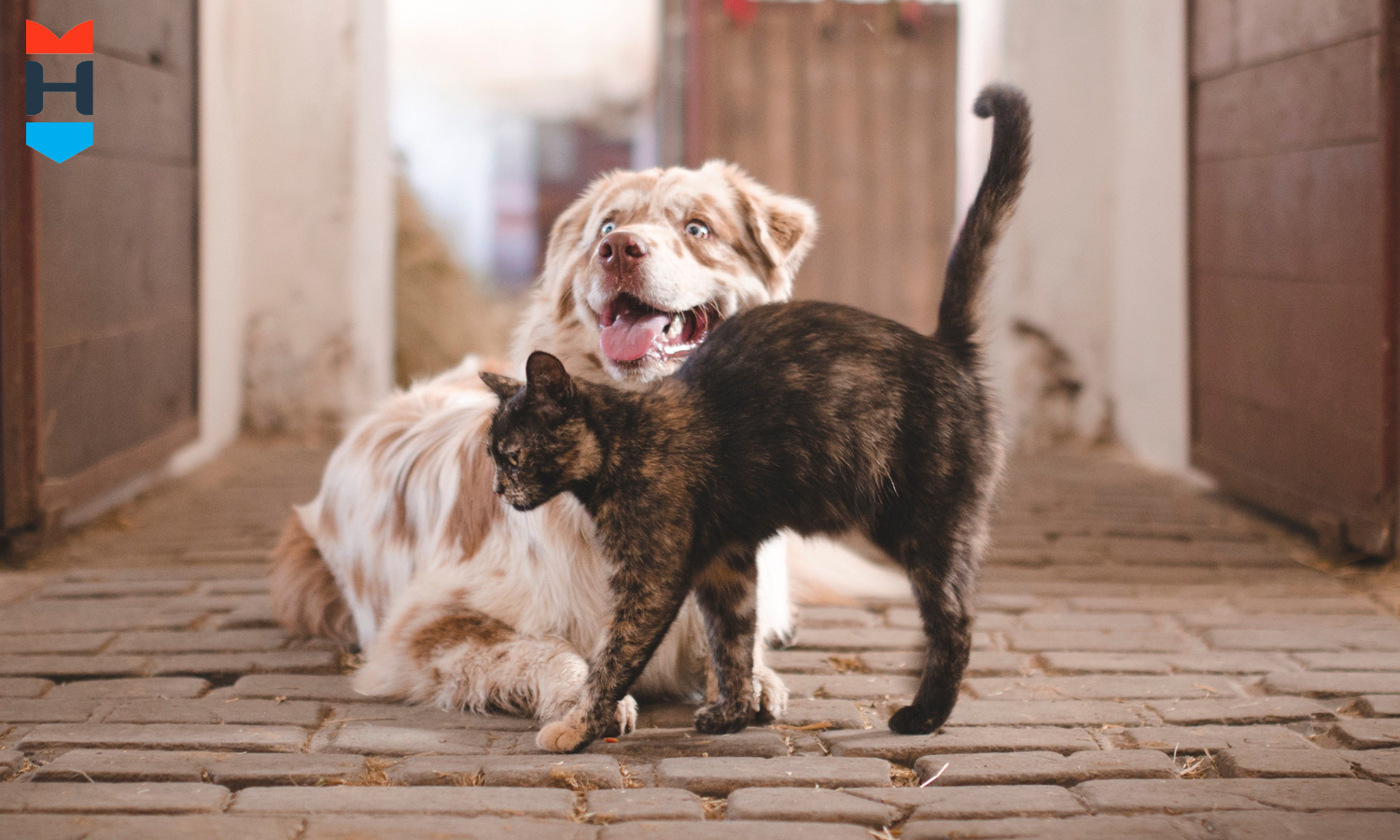Ear infections are a common problem faced by many cat and dog owners around the world. They cause pain and stress for the animals, and often worry and uncertainty for the owners.
But there's good news: With proper care, many ear infections can be avoided or effectively controlled. A balanced diet plays an important role in this. It strengthens the immune system and supports overall body health.
HenArt is a Dutch company specializing in modern pet food based on plant and insect proteins. The company focuses on complete, balanced foods that specifically address health problems such as skin and ear problems – common consequences of allergies or an unsuitable diet.
This article discusses the causes, symptoms, and treatment options for ear infections in pets and how HenArts' innovative food concepts can help prevent and effectively support such infections.
Ear infections in dogs and cats
Ear infections—medically known as otitis—are among the most common health problems in pets. They can be divided into three types:
Forms of otitis
Otitis externa
Affects the external auditory canal and is the most common form of ear infection.
Otitis media
Often develops as a result of untreated otitis externa when the inflammation spreads to the middle ear.
Internal otitis
The most serious form, which affects the inner ear, can result in balance disorders or even permanent hearing loss.
Causes of ear infections
Allergies
Food intolerances or environmental allergies can trigger inflammatory processes in the ear canal.
Bacteria or yeast infections
These microorganisms thrive particularly well in the moist, warm environment of the ear, especially when there is excessive earwax.
Ear mites
A common cause, especially in cats – the tiny parasites can cause severe itching and inflammation.
Excessive moisture
Swimming, bathing, or inadequate drying of the ears can increase moisture in the ear canal and increase the risk of infection.
Ear anatomy
Dogs with long, drooping ears – such as Cocker Spaniels or Basset Hounds – are particularly susceptible because ventilation and cleaning of the ears are difficult.
Recognize symptoms of ear infections
The earlier an ear infection is detected, the easier it is to treat. Certain signs should therefore not be overlooked—they often clearly indicate a problem:
Frequent scratching or pawing
Many animals try to relieve the itching or pain by scratching their ears with their paws or rubbing their heads against furniture or the floor.
Foul odor
A foul, unusual odor from the ear is a common sign of inflammation or infection.
Redness and swelling
The ear canal may appear red, swollen, or generally irritated. This is a clear sign of an inflammatory reaction.
Discharge
Yellowish or brownish discharge, sometimes even pus, may indicate a bacterial or fungal infection.
Shaking the head
Many affected animals shake their heads noticeably often to get rid of the annoying feeling in their ear.
Behavioral changes
Pain and discomfort can also manifest themselves in behavior: irritability, restlessness, or unusual withdrawal are possible reactions.
Treatment of ear infections
If a pet shows symptoms of an ear infection, it's important to consult a veterinarian promptly to determine the exact cause and initiate targeted treatment. Common treatment options include:
Cleaning the ears
The veterinarian will thoroughly clean the ear canal to remove debris, earwax, and discharge that may be contributing to the infection.
Medications
Depending on the cause of the infection, your veterinarian may prescribe antibiotics for bacterial infections, antifungals for yeast infections, or anti-inflammatory medications to relieve swelling and pain.
Topical Treatments
Ear drops or ointments can be applied directly to the affected ear to treat the infection locally.
Surgery
In particularly severe or recurring cases, surgery may be necessary to correct anatomical problems or eliminate persistent infections.
The role of nutrition for healthy ears
An often underestimated factor in the prevention of ear infections is nutrition. A balanced diet strengthens the immune system and helps prevent infections in the first place. With its plant and insect protein-based foods, HenArt provides precisely the nutrients pets need to maintain their health—including their ears and skin.
How HenArt's food can help prevent and treat ear infections
HenArt uses innovative, hypoallergenic protein sources such as plant-based and mealworm proteins to help pets prone to ear infections. These unique ingredients offer numerous benefits:
Hypoallergenic ingredients
Food allergies are among the most common triggers for ear infections. Traditional protein sources such as beef, chicken, and dairy can cause allergic reactions. HenArt's plant and insect proteins offer a hypoallergenic alternative that reduces the risk of ear canal infections and supports healthy skin and ears.
Enhanced digestibility
The easily digestible proteins in HenArt products promote gastrointestinal health. Good digestion helps prevent systemic inflammation, which often affects the skin and ears. This keeps the immune system strong and your pet healthy overall.
Anti-inflammatory properties
Plant and insect proteins are rich in omega-3 and omega-6 fatty acids, known for their anti-inflammatory properties. These fatty acids help reduce inflammation throughout the body—including in the ear canal, which is especially helpful for pets with recurring ear infections.
Immune system support
A strong immune system protects against infections. HenArt food contains important vitamins and minerals, such as vitamins E and C, which strengthen the immune system and help your pet fight off bacteria, yeast, and parasites.
The HenArt Eggshell Membrane® as a supplement
A special highlight in HenArt's food is eggshell membrane, a natural source of glucosamine, chondroitin, collagen, and hyaluronic acid. These substances are known for their anti-inflammatory and healing properties. Especially in pets with chronic ear infections, eggshell membrane can help reduce inflammation in the ear canal and accelerate healing.
What to do – and what not to do
Dos
✅ Regular ear checks
Make ear inspection a regular part of your routine. Look for redness, swelling, or discharge.
✅ Regular ear cleaning
If your pet is prone to ear infections, clean his ears regularly with an ear cleaner recommended by your veterinarian.
✅ Hypoallergenic diet
Consider switching to HenArt plant-based or insect protein food to reduce the risk of food allergies that can cause ear infections.
✅ Veterinary visits
If you notice signs of an ear infection, consult a veterinarian immediately to avoid further complications.
Don'ts
❌ Cotton swabs
Never use cotton swabs to clean your pet's ears, as this could push dirt deeper into the ear canal.
❌ Ignoring symptoms
Don't hesitate to act at the first sign of inflammation – the sooner you intervene, the better.
❌ Experiments with home remedies
Using unapproved products may worsen the infection or cause additional irritation.
❌ Abrupt change in diet
When switching to HenArt, make sure to do so slowly to avoid digestive problems.
Conclusion
Ear infections in dogs and cats are common, but can be easily managed with the right measures. By recognizing the symptoms early, seeing your veterinarian promptly, and ensuring a balanced diet, you can significantly reduce the risk of ear infections. HenArt supports you with innovative plant- and insect protein-based foods that promote your pet's overall health.
Our wholesome recipes, enriched with essential nutrients and eggshell membrane, strengthen the immune system, help reduce inflammation, and prevent allergies—all factors that often lead to ear infections.
With HenArt's hypoallergenic food, you're not only doing something good for your pet's ears, but also contributing to their long-term well-being. This ensures a happy, healthy life without the unpleasant consequences of ear infections.




Leave a comment
All comments are moderated before being published.
This site is protected by hCaptcha and the hCaptcha Privacy Policy and Terms of Service apply.